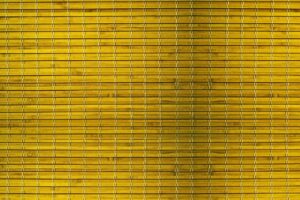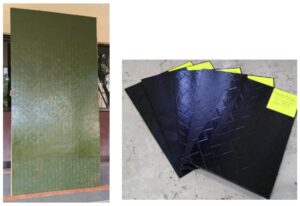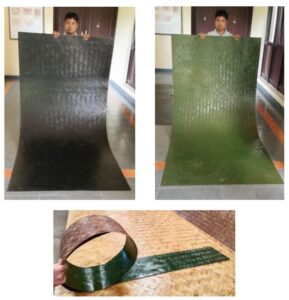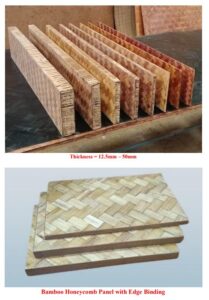1. Introduction
Bamboo-based bio-composite materials are an eco-friendly alternative to traditional composites made from synthetic fibers. These materials are widely used in construction, automotive, furniture, and packaging industries due to their lightweight, high strength, and sustainability. This report outlines the investment, production process, market potential, and financial feasibility of starting a bamboo-based bio-composite manufacturing unit.
2. Objectives
- To establish a production unit for bamboo-based bio-composites.
- To promote sustainable materials in industrial and commercial applications.
- To cater to domestic and international markets with high-quality bio-composites.
- To create eco-friendly alternatives to plastic and synthetic fiber composites.
3. Market Analysis
3.1 Demand Analysis
- Growing global demand for sustainable building materials.
- Increased adoption of bio-composites in automotive, construction, and furniture industries.
- Government initiatives supporting eco-friendly material production.
- Rising consumer awareness about environmentally friendly products.
3.2 Target Market
- Construction and infrastructure industry.
- Automotive manufacturers seeking lightweight and sustainable materials.
- Furniture industry replacing wood with bamboo bio-composites.
- Exporters targeting Europe, North America, and Asia-Pacific markets.
4. Land, Machinery & Costing
4.1 Land & Infrastructure
| Item | Quantity | Cost per unit (INR) | Total Cost (INR) |
|---|---|---|---|
| Land (3 acres) | |||
| Factory Building & Storage | |||
| Machinery & Equipment | |||
| Office & Utilities | |||
| Total | – | – |
4.2 Raw Materials & Production Costs
| Item | Quantity | Cost per unit (INR) | Total Cost (INR) |
|---|---|---|---|
| Raw Bamboo | |||
| Resin and Binders | – | – | |
| Processing Chemicals | – | – | |
| Labor (30 workers) | |||
| Packaging & Branding | – | – | |
| Miscellaneous | – | – | |
| Total | – | – |
4.3 Production Process
- Harvesting & Preparation – Selection of mature bamboo suitable for composite manufacturing.
- Fiber Extraction – Processing bamboo into fine fibers for composite formation.
- Resin Infusion & Molding – Combining bamboo fibers with bio-resins and molding into required shapes.
- Curing & Strengthening – Heat treatment and pressure application to enhance durability.
- Finishing & Quality Control – Final treatments, polishing, and strength testing.
- Packaging & Distribution – Ensuring proper storage and shipment to buyers.
5. Financial Analysis
5.1 Cost Estimation
Fixed Costs
| Expense | Cost (INR) |
|---|---|
| Land & Infrastructure | |
| Machinery & Equipment | |
| Factory Setup & Utilities | |
| Total Fixed Costs |
Variable Costs (Per Year)
| Expense | Cost (INR) |
|---|---|
| Raw Materials | |
| Processing & Chemicals | |
| Labor | |
| Utilities & Maintenance | |
| Marketing & Distribution | |
| Total Variable Costs |
5.2 Revenue & Profit Analysis
| Parameter | Value |
|---|---|
| Selling Price per Unit | |
| Production Capacity (Per Year) | |
| Revenue from Sales | |
| Annual Cost (Fixed + Variable) | |
| Profit (From Second Year Onwards) |
6. Break-Even Analysis
- Fixed Costs:
- Profit Per Year (After First Year):
- Break-even Point =
7. Sustainability & Environmental Impact
- Waste Utilization: Bamboo waste can be repurposed for biofuel or compost.
- Carbon Footprint Reduction: Substituting synthetic materials with bamboo bio-composites.
- Renewable Resource: Bamboo regenerates quickly and requires minimal water.
- Plastic Waste Reduction: Providing an alternative to conventional plastic composites.
8. Challenges & Mitigation Strategies
| Challenge | Mitigation Strategy |
|---|---|
| Raw Material Availability | Partner with bamboo plantations and ensure a steady supply |
| Market Competition | Focus on R&D, innovation, and branding |
| Initial Investment | Seek government subsidies, private investments, and green funding |
| Product Awareness | Educate industries on the benefits of bamboo bio-composites |





